This store requires javascript to be enabled for some features to work correctly.
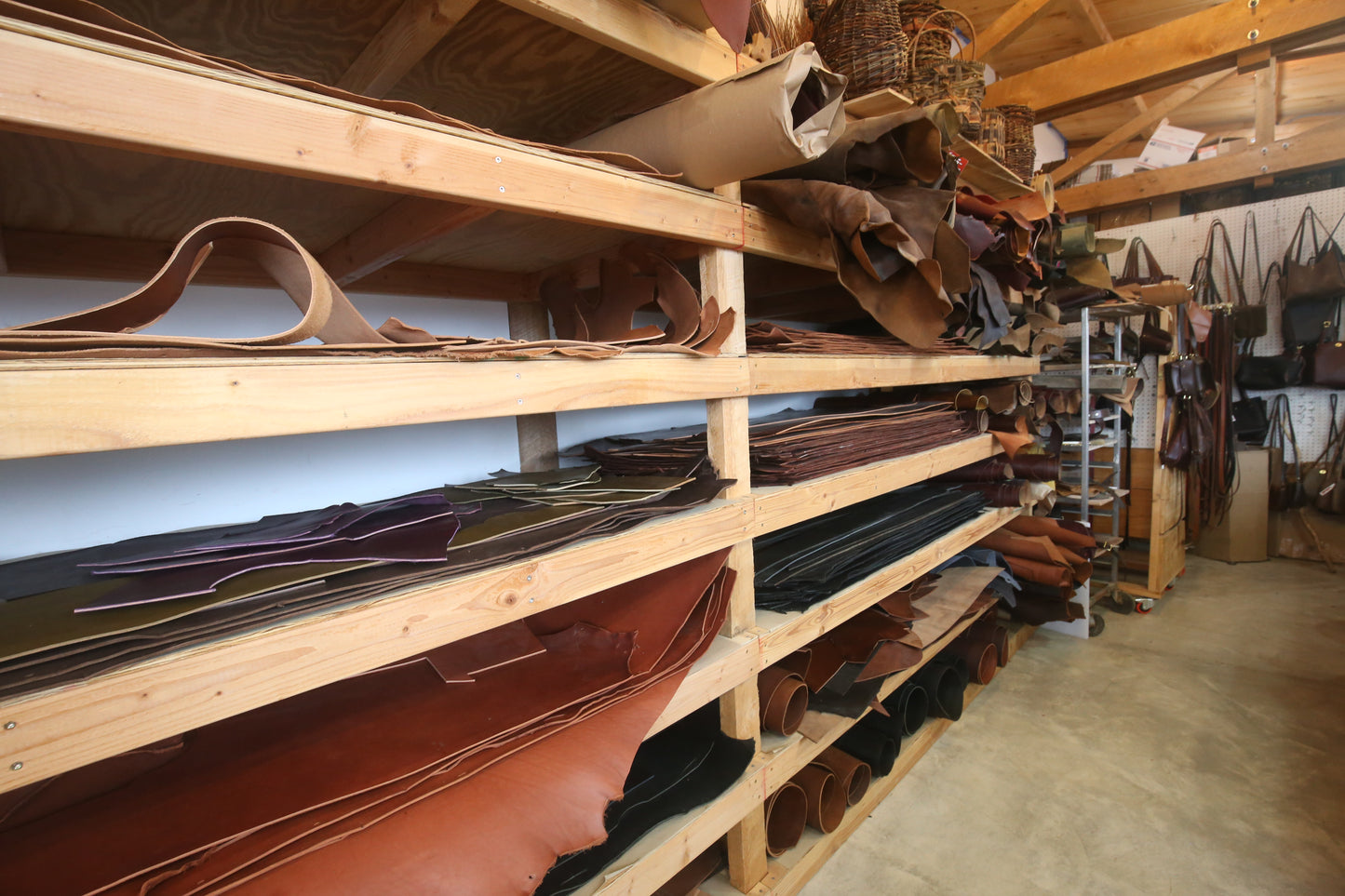
- For our signature X stitched leather bags, we use premium vegetable tanned American steer hide. The cows are raised for meat, their hides a nearly worthless byproduct until they are transformed into beautiful leather. The leather hides are dyed with plant tannins in Mexico, and are dyed in huge drums at the tannery to ensure even dye penetration and color.
- We take a yearly trip each fall to hand select the best leather hides for our bags. We buy our vegetable tanned leather by the "side". A "side" is essentially half of an entire leather hide, cut in half lengthwise down the center of the back. A "side" includes the neck and shoulders part of the hide, which usually have gorgeous rippled grain patterns, the back part, which is perfect for straps or belts, the butt, which is the widest part of the hide and is perfect for large tote bags or one-piece patterns, and the belly, which is generally softer, stretchier and tends to be uneven in density. We love buying sides because we often incorporate the "natural edge" or "live edge" of the hide into our bag designs.
- We use full grain leather, which means we are using the entire thickness of a hide once it's tanned. For our bags, our vegetable tanned hides are 8-10 ounces thick. The hide is not split, and contains the top grain (the part of the hide where the hair grows), middle section of the grain, and flesh side. When tanneries tan hides, they do their best to remove stringy remnants from the flesh side of the hides, but once in a while some of this remains on a finished hide and may look a bit "fuzzy" on the inside of a bag.
- In caring for vegetable tanned leather, you can oil *both* sides of the leather!
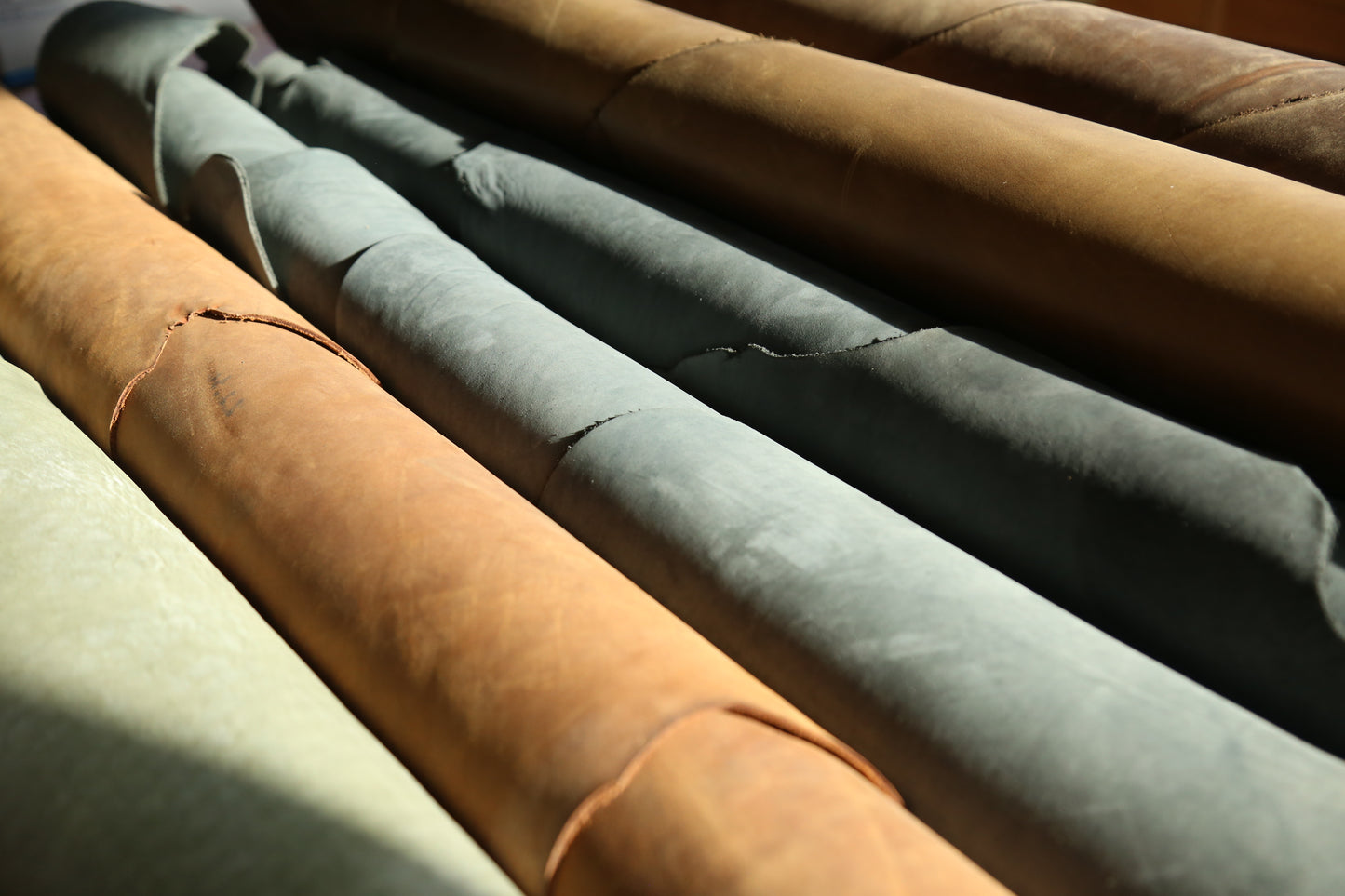
- Leather so soft it's impossible not to give it a squeeze. Most of the leather used in the world today is chrome tanned. Think soft leather bags, upholstery leather, and the leather you find in commercial leather products and leather apparel.
- We source our chrome tanned leather from a few tanneries in the midwest and New England, USA. The hides are sourced from American cows and tanned in the USA.
- We generally use thinner weight leather, around 5-6 oz. for our softer, chrome tanned leather goods.
- Some of our chrome tanned leather has a soft, milled suede-like feel to the surface.
- Some is stuffed with oils for a beautiful, rich pull up (the hide changes color when you bend it)
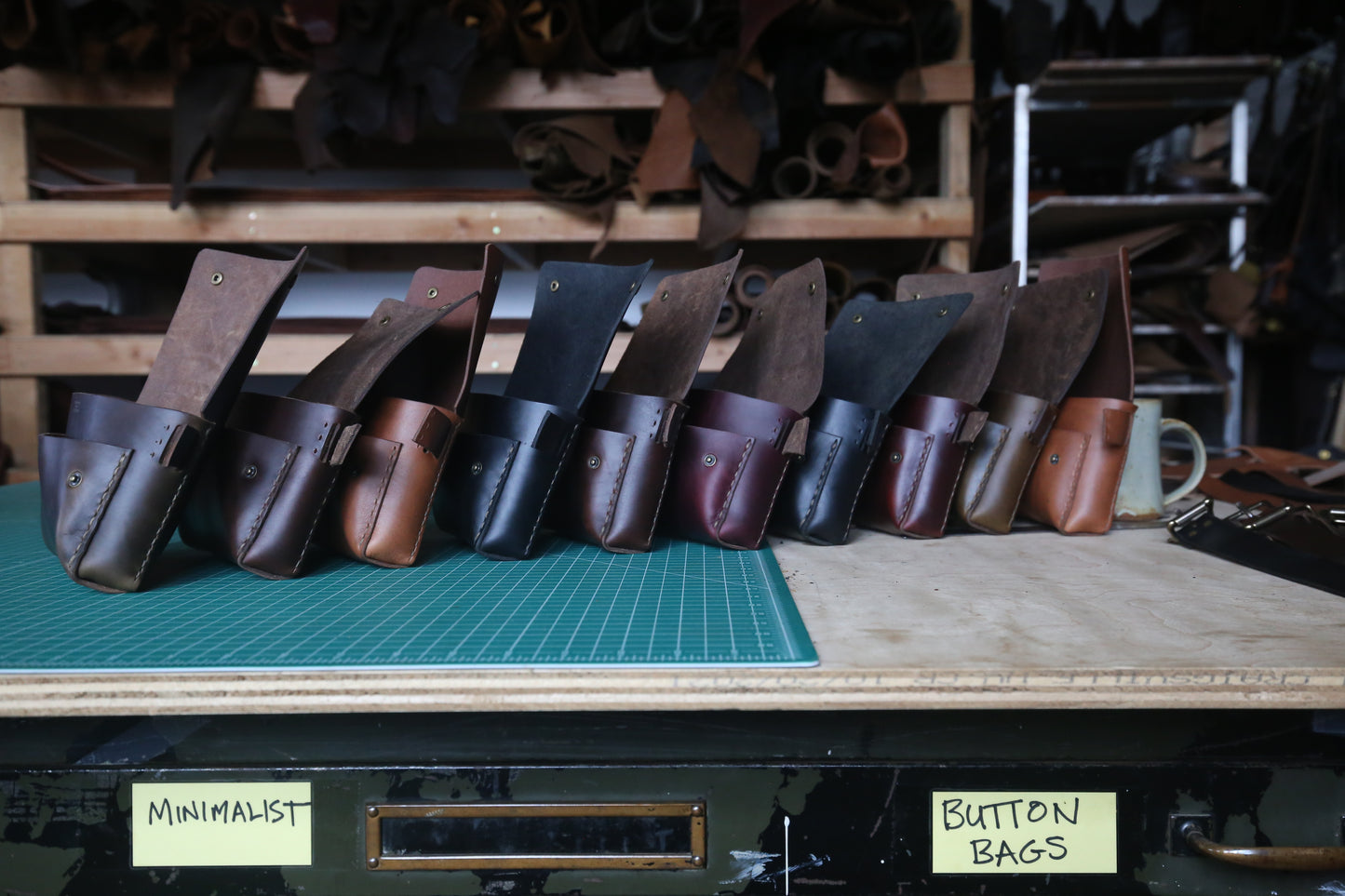
- This leather is tanned by the iconic Horween Tannery in Chicago. Horween is one of the oldest continuously-running tanneries in the USA, and produces world class leather.
- Chromexcel is the best of both worlds, and is a combination vegetable/chrome tan. It is stuffed with a proprietary blend of oils and waxes, so it is naturally waterproof.
- We use Chromexcel for our Garden Tool Belts, shoes (only available locally), hip pouches, and more.
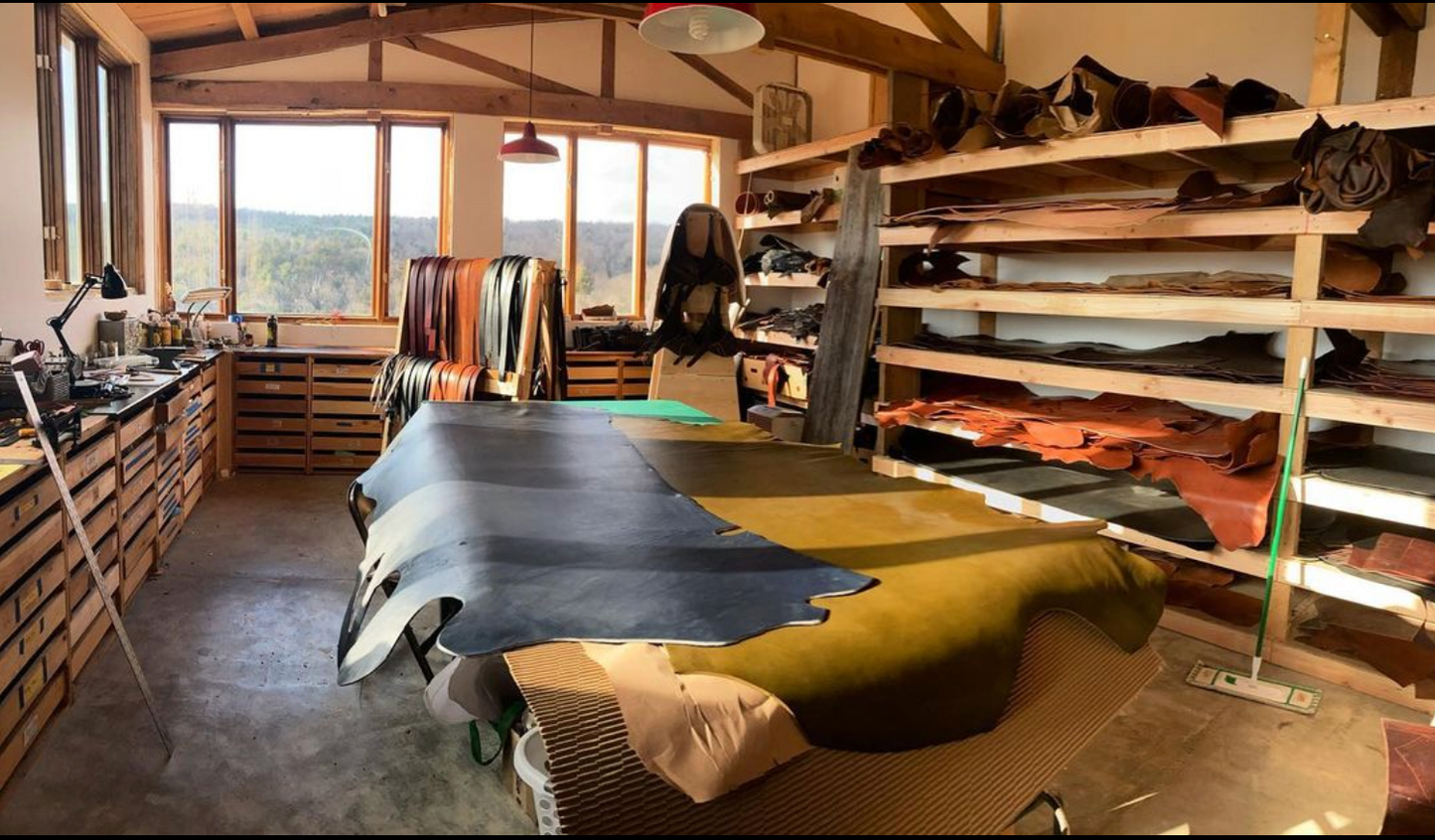
- Our olive green and eggplant colored leathers are sourced from the Wickett & Craig Tannery in Curwensville, Pennsylvania.
- English Bridle leather is hot stuffed with oils, and is a bit more finished on the surface than our regular vegetable tanned leather.
- We use 8-10 ounce English Bridle leather for our signature X stitched purses and totes.
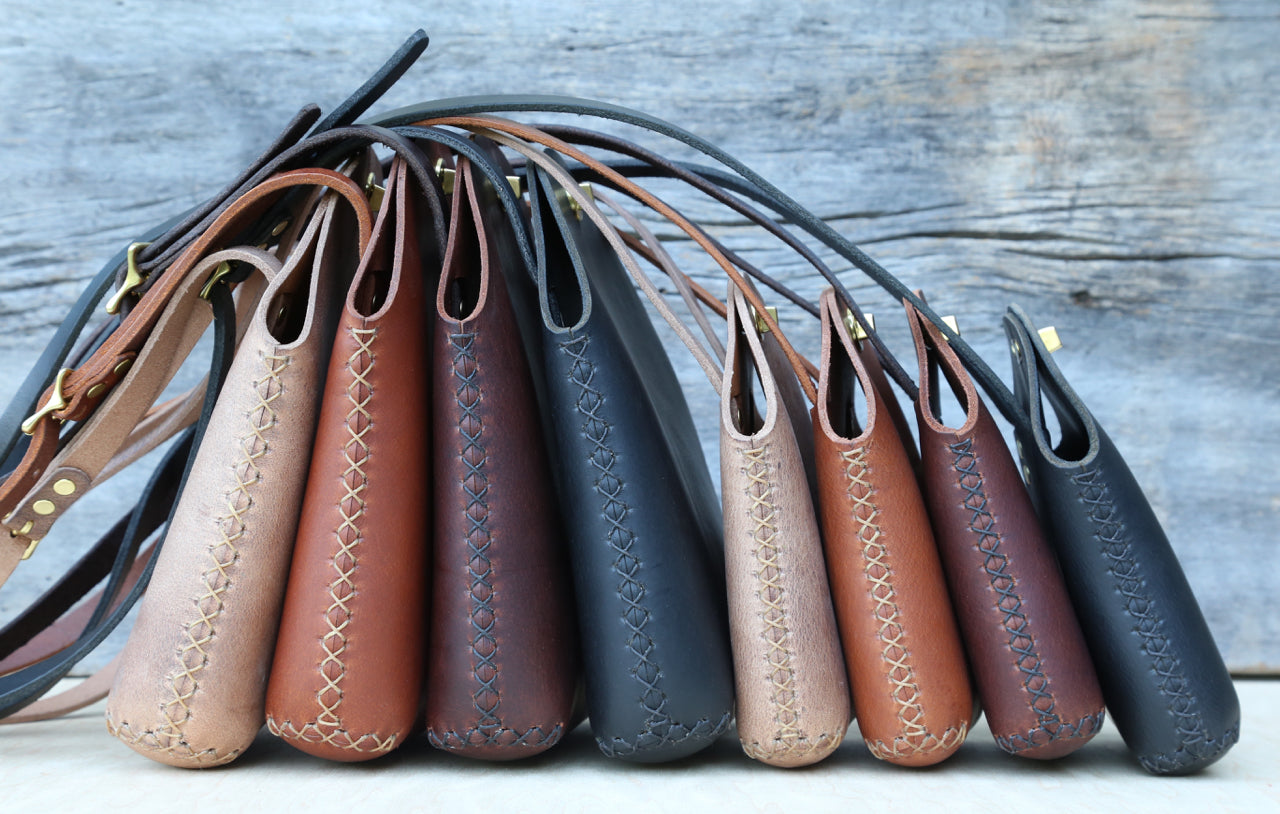
- We absolutely LOVE working with this water buffalo hide. It is stuffed with oils when it is tanned and has a luxurious feel. The oils make it much easier to punch the holes before we hand stitch.
- The water buffalo hides are sourced from animals raised in Asia, and is tanned in the Netherlands. We hand select our hides on our yearly leather-buying road trip.
- We use 8-10 ounce water buffalo hide for our Minimalist Crossbody Bags, and some of our tote bag designs.
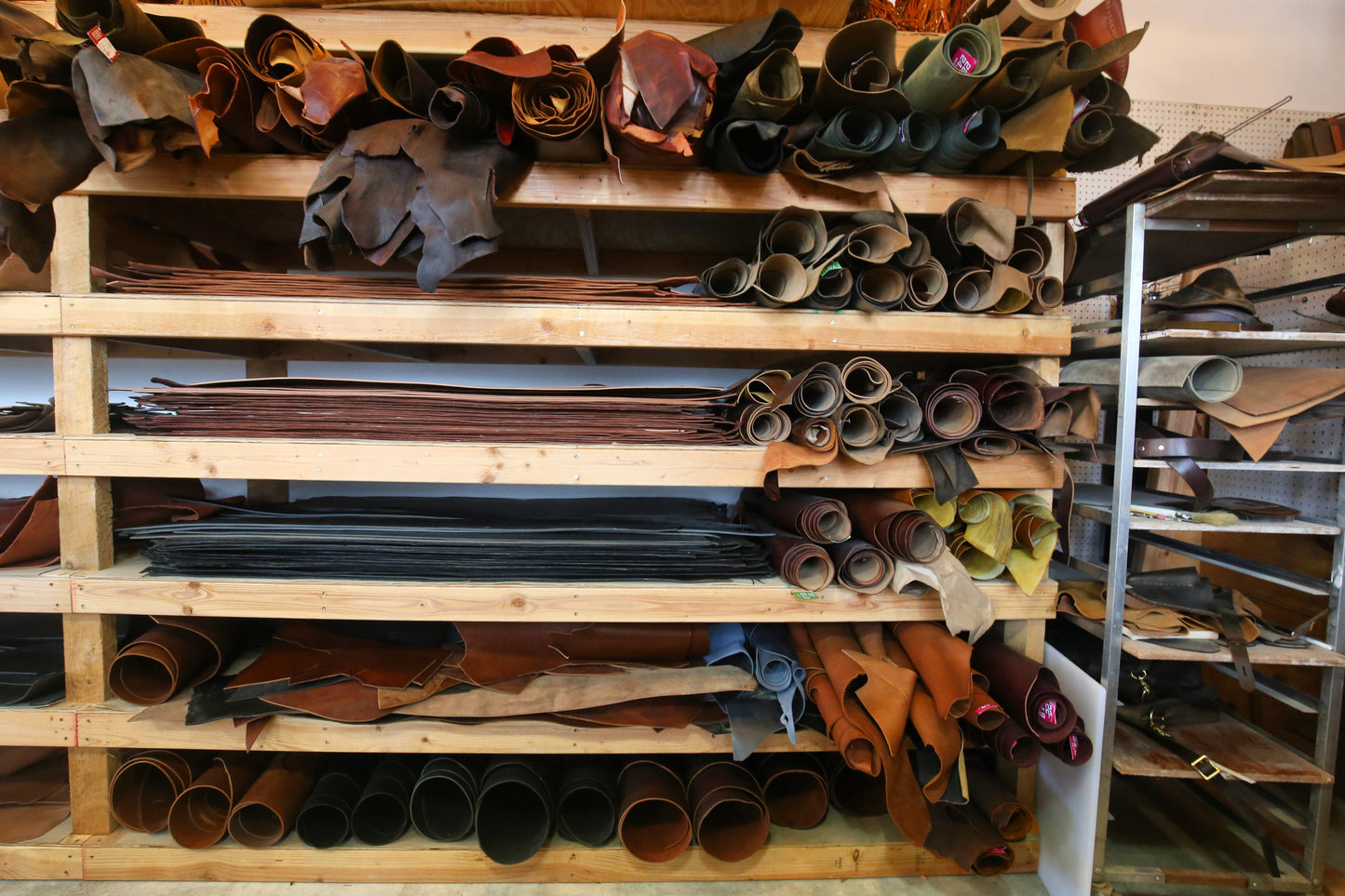
- We use only the best, heavy-duty, 10-12 oz English Bridle Leather for our handmade belts. It is sourced from American steer hides, then tanned in Mexico.
- English Bridle Leather is vegetable tanned then hot stuffed with oils. It has more of a finished surface on both the front and back sides of the hide than our regular vegetable tanned or chrome tanned steer hide, and can even have a bit of a sheen to the surface. Any fleshy bits that remain after tanning are slicked down to the back side of the hide.
- We hand select our hides on our yearly leather roadtrip to ensure quality and uniformity in color and temper.



